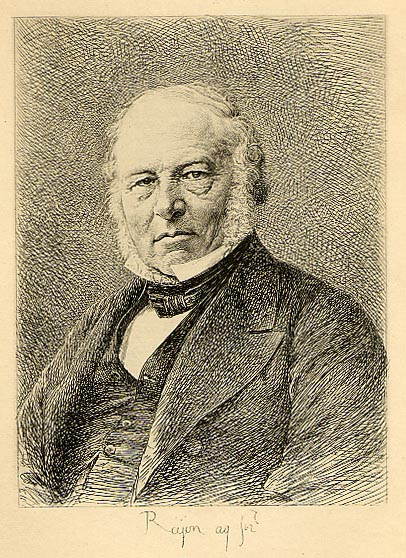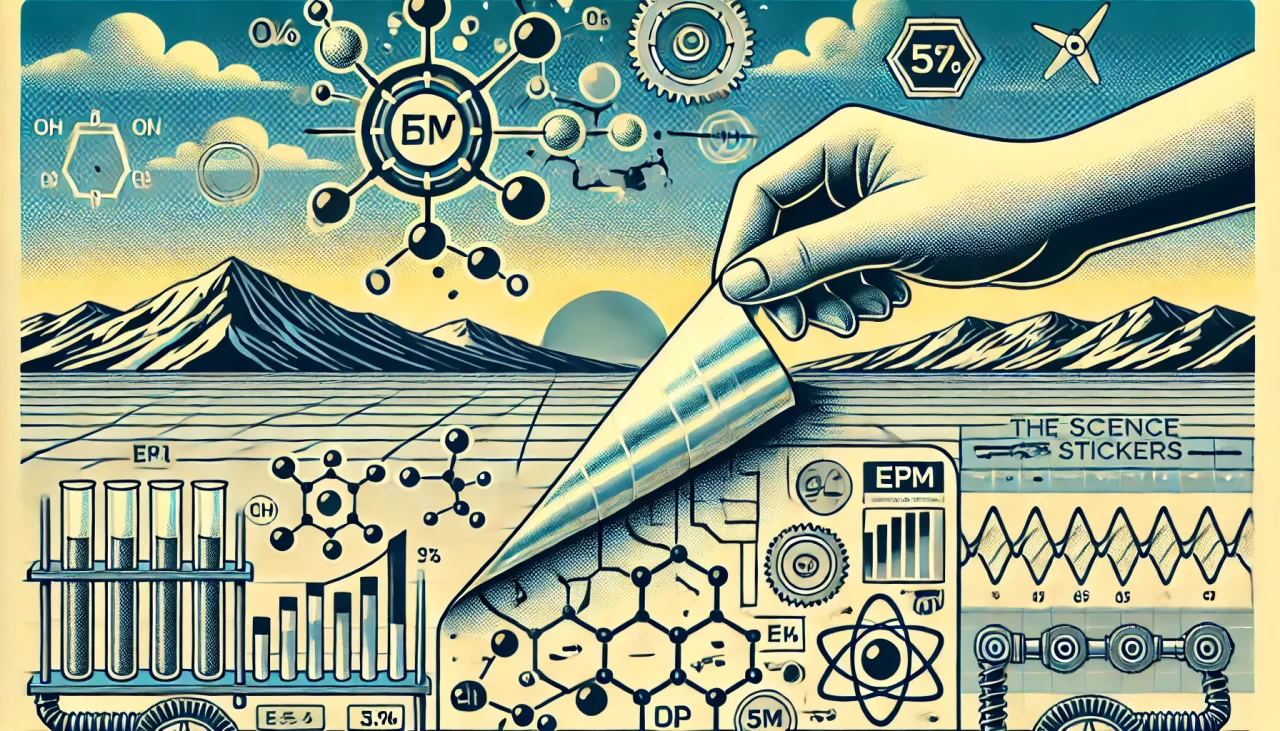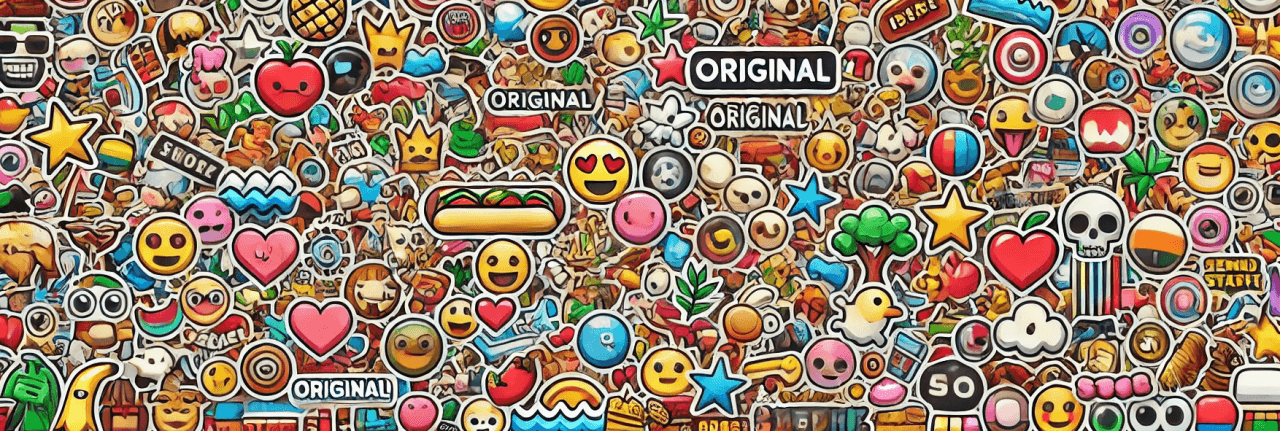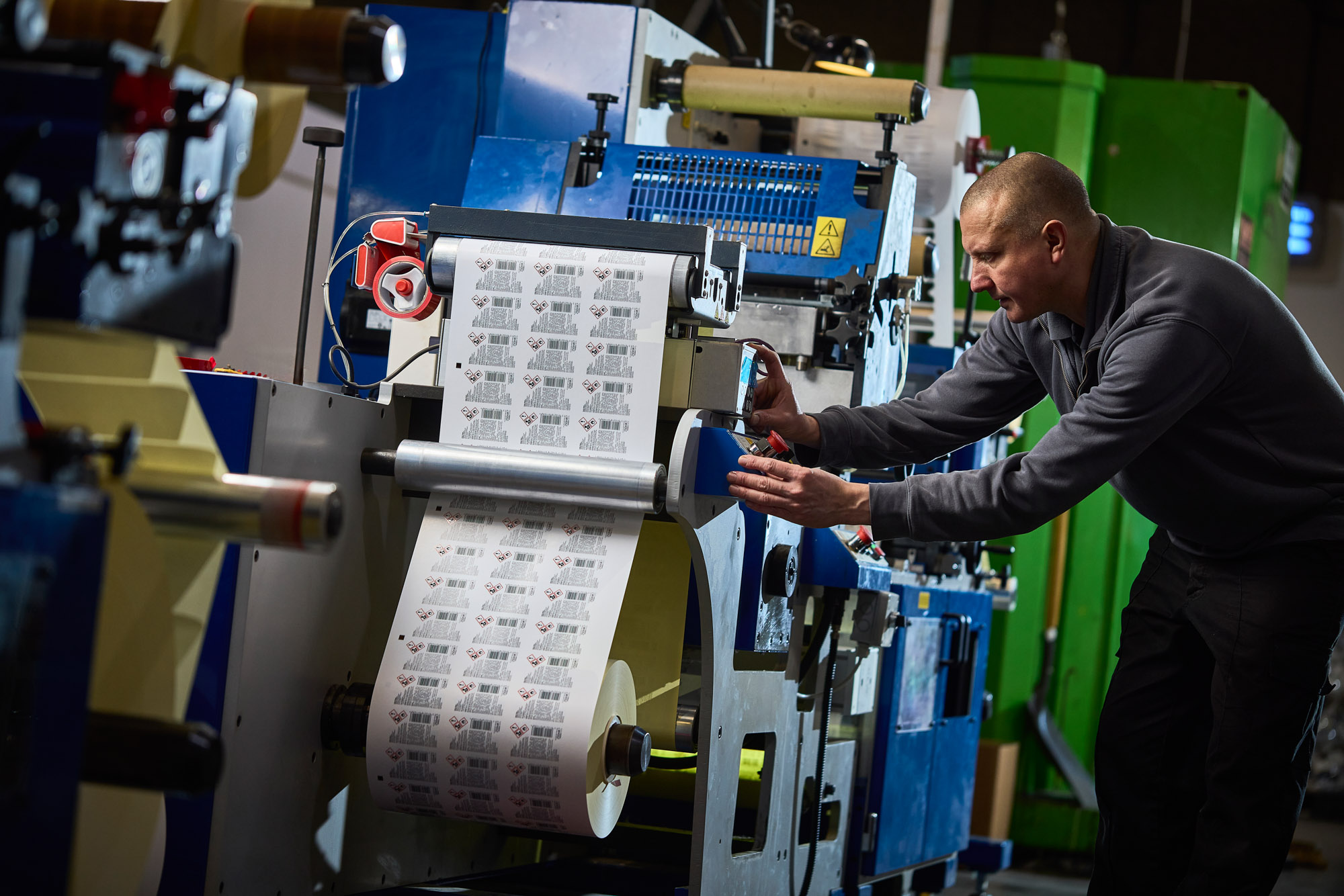Introduction
Who’d have thought that a simple adhesive piece of paper, often overlooked and underappreciated, could have such a fascinating history? From postage to decoration and branding to information carrier, it’s a common item we use daily and its origin is a tale worth telling. Let’s delve into the intriguing journey of the sticker’s invention.
In 1839 Rowland Hill was credited with creating the first adhesive paper. It wasn’t just any sticky note, but a significant innovation that would soon evolve into the first postage stamp. Before this, sending letters was a laborious task, requiring a trip to the post office and a complex payment system based on the letter’s size and destination.
But Hill’s invention changed the game. By May 1840, the UK had embraced this new concept, and just two years later, the US followed suit. So, let’s peel back the layers of history and explore the evolution of this humble yet revolutionary invention.
Tracing the lineage of stickers first leads us back to ancient Egypt. Egyptians purportedly used a form of adhesive to affix notes signifying prices onto market commodities. It’s a compelling example of how even sophisticated cultures pinpointed the significance of stickers in their own unique way. However, defining the term “sticker” might just complicate this narrative.
Centuries later, in the 1700s, we find further evidence of this adhesive innovation in the form of tax and revenue stamps. These were attached to documents, yet required externally applied glue, differentiating them from the self-adhesive properties we associate with stickers today.
The transformational leap towards adhesive paper – the precursor to modern stickers – came into view in the 19th century. Sir Rowland Hill, often cited in sticker history, introduced the concept of adhesive paper in 1839. This invention, considered by many as the first postage stamp, was a significant stride towards the development of contemporary stickers. These were the first known instances of self-adhesive postage stamps, effectively changing the way we dispatched mail.
Amid this evolving landscape, contributions from European advertising pundits in the 1880s also deserve acknowledgement. Their exploration in the marketing sphere had a profound influence on the evolution of stickers, primarily used for promoting produce.
Finally, bringing a more familiar face to the sticker’s history, we encounter R. Stanton Avery in the 20th century. Known for his pioneering creation of the first self-adhesive label in 1935, Avery’s invention was a consequential step in the onward journey of the sticker.
The sticker’s past, undeniably, has its roots in multiple eras, cultures, and industries. Its evolution involves forward-thinking individuals and different applications, each contributing to its ultimate form and function. As a promotional tool and a means of communication, its adhesive simplicity, and expressive power remain unrivalled. With a history as adhesive as the product itself, stickers continue to stick around, etching their importance in our everyday lives.
The Two Inventors
Transitioning from the roots of adhesives in ancient Egypt and onwards, there exist two key figures pivotal to the evolution of stickers in history. It’s this enlightening journey through time that introduces us to Henry Rowland Hill and Ray Stanton Avery, both metamorphosing stickers into what we see today.


Henry Rowland Hill, credited for the first adhesive postage stamp in 1839, dramatically refined the process of sticking. The inception of these adhesive paper pieces eliminated the need for externally applied glue, hence revolutionising the communication sphere. Hill’s contribution nudged us a step closer to modern stickers, impacting industries throughout.
Yet the monumental stride in sticker evolution was courtesy of Ray Stanton Avery. Born on January 13, 1907, Avery prevailed through financial hardships during his early life, living in rented chicken coops and working in the Midnight Mission to self-finance his education at Pomona College. Avery later also spent about a year in the Orient as part of a study group before graduating with a humanities degree in 1932.
Establishing a legacy that surpassed his humble beginnings, Avery’s biggest claim to fame lies in his invention of the self-adhesive label in 1935. As opposed to Hill’s stickers requiring a touch of moisture to activate the adhesive, Avery’s innovation was ready-to-stick. This revolutionary concept, dubbed by some as the resealable sticker, skyrocketed in popularity at an incredible pace.
Such was Avery’s impact that his alma mater, Caltech, named the ‘Avery House’ after him. In addition to his entrepreneurial achievements, Avery’s philanthropic contributions, and his trusteeship in many nonprofit organisations, also earned him acclaim in society.
Sticker development owes much to both inventors, each propelling the adhesive form into new realms of efficiency and applicability. These advances, bearing the fingerprints of both Hill and Avery, are visible in the evolution of stickers from simple glued paper to self-adhesive labels, accompanying us in our daily lives in the form of product labels, name tags, decorations, and so much more.
Evolution of Stickers
Over time stickers have undergone considerable transformations since their ancient Egyptian origins. Initially, these adhesives served merely to display prices in bustling marketplaces. Fast-forward a couple of centuries, and the invention of adhesive paper by Sir Rowland Hill in 1839 brought about the postal stamp, absolving us from the tedious task of applying external glue.
Hill’s innovation marked a significant advancement in sticker technology. However, a major shift transpired during the 1930s when Ray Stanton Avery introduced the pre-coated, ready-to-stick label. Known affectionately as ‘Stan the Sticker Man’, Avery’s ground-breaking creation revolutionised sticker usability, making it a popular tool for various applications.
The advancement from ancient adhesives to modern-day stickers has not been linear. In fact, each introduction emerged as a response to social, technological, and commercial needs. It’s important to recognise that stickers have always been more than mere adhesive materials. Key to their success is their adaptability and ability to meet changing needs – whether it’s marking prices at a bazaar, installing a postage system or building a branding empire.
Moving forward, Avery Dennison, Stan’s company, continues to lead in the realm of sticker design and manufacture. Today, you’ll find stickers as collectables, brand identifiers, and crucial components in supply chain logistics. Some even use them for personal expression, be it on a laptop or the back of a phone.
Over the years, stickers have morphed from functional labels to powerful tools for communication, commerce, and personal expression. Regardless of the form they take, they remain irreplaceable aspects of our daily lives, thanks to innovators like Hill and Avery who had the foresight to transform a simple adhesive into an industry. Their contributions encapsulate the evolution of stickers: from humble beginnings to dynamic, multi-purpose tools.
The Science Behind Stickers
Building on the story of sticker evolution, let’s delve into the science behind these adhesives. Understanding that science starts with grasping the basis of adhesion – the primary function of any sticker. Adhesion refers to the tendency of dissimilar particles or surfaces to cling to one another. In stickers, this is achieved through the application of an adhesive substance to one side of the material.

The active ingredient in most adhesives is polymer. Polymers are large molecules comprising chains of repeating units that exhibit excellent adhesive properties. They form molecular bonds with the surface they’re applied to, ensuring a strong and lasting hold. Introducing the adhesive under specific conditions, such as heat or pressure, can boost the bonding strength.
In relation to sticker technology, Avery’s innovation brought about the use of a layer of adhesive which remains tacky even after being exposed to the air. This layer, applied to the backing material, lets the sticker be placed, removed and repositioned multiple times without losing its stickiness. It’s this principle that allows everyday items like Post-it notes or resealable labels to function as they do.
Yet, there’s more to stickers than just their adhesive properties. The backing material and the release liner play key roles too. The backing material, which could be paper, plastic, or vinyl, provides the base onto which the design gets printed. Subsequently, a release liner – usually coated with a silicone-based release agent – covers the adhesive side of the sticker. This liner not only protects the adhesive from dirt or damage until use, but it also allows for easy removal when the sticker’s about to be applied.
That’s a quick, concise look at the science behind stickers, a remarkable blend of chemistry and engineering that transformed strips of material into powerful tools of expression and utility. As we continue to see innovations in adhesive technology and material sciences, the story of stickers isn’t over yet – it’s still being written.
Uses of Stickers
Stickers, with their multifaceted utility, cater to diverse needs in today’s world. Their adaptability and expressive nature make them an excellent marketing solution. Brands find stickers an ideal tool for creating an enduring impression owing to their visibility and memorability. These adhesive icons amplify brand recognition efforts, acting as miniature billboards that the audience can stick to wherever they desire.

Additionally, stickers serve effectively in the realm of information dissemination. They function as instructional aids, guiding users about product use and care. Many brands use them for providing detailed information about ingredients, manufacturing dates and, of course, prices.
For aesthetic purposes, stickers also fulfil the need for personal expression and creativity, particularly amongst younger demographics. They transform ordinary objects into personalised items, breathing life into notebooks, laptops, and water bottles by showcasing individual interests and styles.
Circa the 60s and 70s, stickers dived into mainstream consciousness. They emerged as labels, decorations, and directional signs, roles they maintain today. Companies leveraged stickers as a means for cost-effective advertising, thus spreading their messages far and wide.
Throughout this era, environmental concerns began to gain pace alongside stickers’ widespread usage. Stickers’ environmental impact turned out to be profound due to the plastics in their production and the trees cut down for the paper. These issues translated into a push for eco-friendly stickers with sustainable adhesives and materials.
Conclusion
Stickers have come a long way from their humble beginnings as price tags in ancient Egypt. Ray Stanton Avery’s invention of self-adhesive labels in the 1930s was a game-changer, creating a versatile tool that’s never lost its stick. The science behind stickers, involving a mix of chemistry and engineering, has made them indispensable in our everyday lives. Today, they’re much more than just labels. They’re used for brand recognition, spreading information, personal expression and even promoting environmental sustainability. Stickers have truly evolved to meet our diverse needs, serving as tiny billboards, teaching tools and decorative items. Their importance in commerce, information sharing, expression and environmental consciousness is undeniable. The journey of stickers showcases their complexity and depth, proving they’re far more than meets the eye.
Do you have a sticker query or a burning desire to know more about the solutions we offer? Feel free to get in touch with us.

